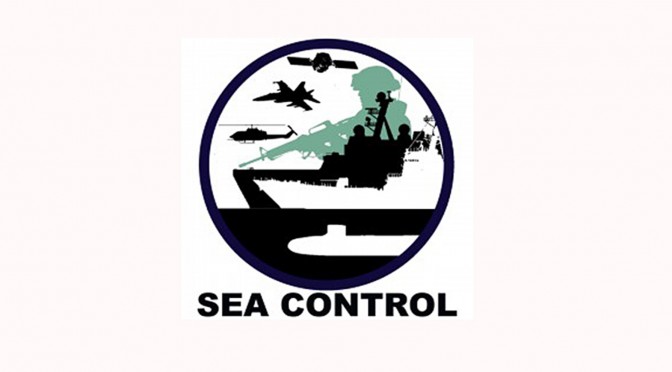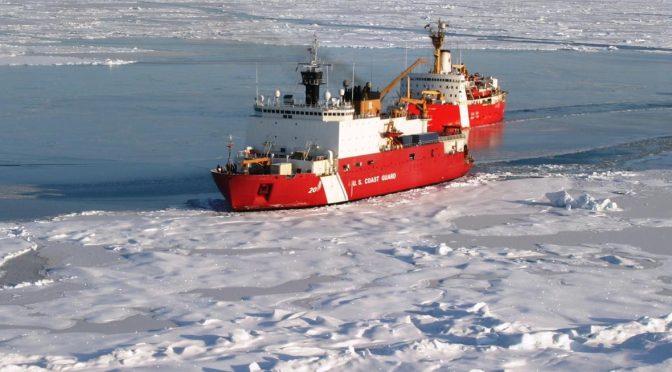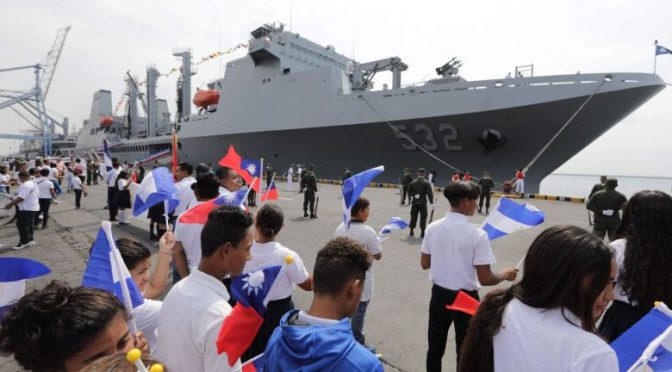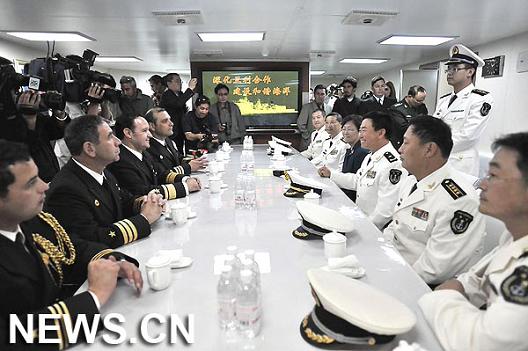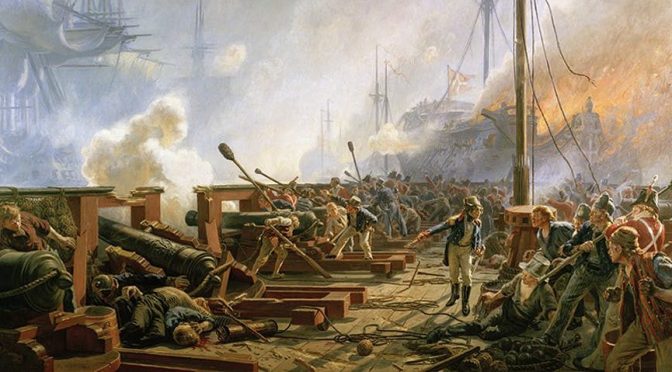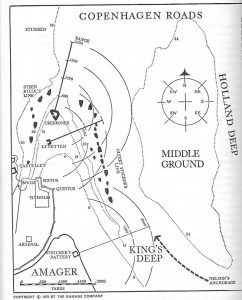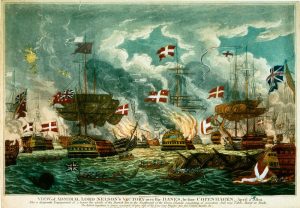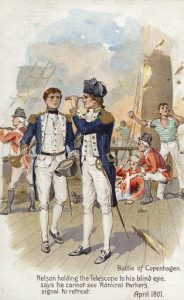By Travis Nicks
We were honored to speak with former Secretary of the Navy John Dalton and his wife, Margaret Dalton, about their service during the Clinton administration.
TN: Hi, and welcome to another episode of Sea Control. I’m Travis Nicks, the Vice President of CIMSEC, and on behalf of CIMSEC, I’m honored to be joined today by the former Secretary and first lady of the Navy, John and Margaret Dalton. Secretary Dalton served as the Secretary of the Navy from 1993 to 1998. In that time, Mrs. Dalton was instrumental in many quality of life improvements in our Navy, to include improvements in base housing, and has conducted many outreach efforts, even holding frequent visits to aircraft carriers for groups of congressional spouses. Mr. Secretary, Mrs. Dalton, thank you for joining us.
So starting off Secretary Dalton, you served as Secretary of the Navy from 1993 to 1998. Do you mind sharing how you became the Secretary of the Navy?
JD: Sure. I’ll be glad to. The reason I think I was considered to be Secretary of the Navy was because I had prior military service, and also prior service as a government official. I was president of Ginnie Mae, the Government National Mortgage Association in the Carter Administration. And after lunching in Dallas, and sat next to him, and got acquainted with him, and liked him, and decided to work in his campaign, and was actively involved in his campaign. When he was elected, he appointed me to be President of Ginnie Mae. That was my first government service. I really enjoyed it, and did that for two and a half years. And when they formed the Reelection Committee,– I was named Treasurer of the Carter-Mondale Reelection Committee. And I was a young man – I was 37 at the time. I was 35 when I got the Ginny Mae appointment, and 37 when I became the National Treasurer of the campaign. And we had, you know, children. When the seat became available on the Federal Home Loan Bank Board, after having worked in the campaign for about 6 months, I decided to ask the Chief of Staff of President Carter, Hamilton Jordan if I could have this seat at the Federal Home Loan Bank Board. I would still work on the campaign, but I, I’d taken a pay-cut to go into government, and another pay-cut to go on the campaign, and I have small children, and so I thought that would be a better way – better for me personally – so I was able to work that out and do that. After the election in 1980, when President Reagan was elected, I had another – well, on the Federal Home Loan Bank Board, the term didn’t end with the administration. It actually went through June of ’82. And so I stayed on for a number of months, and a headhunter approached me, and I took a job in San Antonio, Texas, and lived in San Antonio for twelve years in the savings and loans business, and then in the private equity business, and then back in the investment banking business – where I’d originally been when I was working for Goldman Sachs – when I met Jimmy Carter (Governor Carter).
But how I became Secretary of the Navy was, I was active in the Clinton campaign. I was active in the Democratic Leadership Council, which was the more moderate wing of the Democratic Party. And Governor Clinton was Chairman of the DLC, or the Democratic Leadership Council. So I got to know him through that. And when he announced his candidacy for president, I supported and was active in his campaign and when he was elected, because of what I’d done in the campaign, and the fact that I had served on active duty and been involved in the Carter Administration, so I had government experience.
Actually, what happened was, Henry Cisneros was Mayor of San Antonio, and he approached me about two weeks before the election and said who with their work in the campaign could serve adequately in the new administration. So I went there, and he said, “Would you please think about that and come see me, and tell me,” since Henry Cisneros was on the transition team. They were, eight or nine people that were on the Transition Committee before the election, and he was one of them. He solicited my advice about people who would serve in the administration. We talked a couple of weeks before the election, and he said, “We’re going to win, and you know, thank you for the names of these people that you think could serve well. But what about you?”
And I said, “You know, Henry, this is not a good time for me – personally, financially. And the only way I would go back into government service is if there were something meaningful that I could do.”
And he said, “I don’t know what you mean by meaningful, but the Cabinet is spoken for. Is there anything other than the Cabinet that you think you would be interested in?”
I said, “Yes, there is one job. The Secretary of the Navy.”
And he said, “I think you’d be great at that.” And he said, “Get me your resume. I’m going to go to Little Rock tomorrow, and I’m going to see Warren Christopher, who’s the chairman of the Transition Committee, and I’ll give him your resume.”
That’s how it happened.
TN: So you started off your time in the Navy at the U.S. Naval Academy and then with submarines, and then afterward, went to the Wharton School of the University of Pennsylvania. How did the Naval Academy help you in your professional career? And how did those early formative experiences in your career help you become Secretary of the Navy, and then your career afterward?
JD: Well, it helped me a great deal. First of all, some background. I had an uncle who was a Navy hero in WWII. And, you know, I was a young boy – I was born in ’41, so, I was. But the first naval officer I ever heard about was my uncle, Roy, who actually won the Navy Cross, the Silver Star, and five Distinguished Flying Crosses. I mean, he was a genuine hero in WWII. And so my impression of the Navy was very positive from the get-go, and I wanted to go to the Naval Academy. You know, as a young man particularly, in high school.
But I didn’t get the appointment out of high school. That’s truly the only place I applied, and I was sure that was where I was going to go, and I had good grades, and I was on the student council – and all that kind of thing. So I thought I would get the appointment, but I didn’t. And so I went to LSU for a year, and that was a great experience. And I was active in government politics, was elected to the student government association, and president of my pledge class – that kind of thing. And then, I went to see the Congressman here again – what we’re talking about earlier, the personal aspect of seeing the decision-maker is key – and I went to see Overton Brooks, who was our Congressman, and told him that he had not given me his principle appointment the previous year, but I’d gone to LSU and done well, and I hoped that he would give me the appointment this year. And, I said, “It’s not something you’ll regret, because I will do well there.”
He gave me the appointment and I went to the Naval Academy. I didn’t get off to a great start. The first time they published an UNSAT list, my name was on it. And I went out for the crew team and got cut and so forth. But I made the varsity plebe team, in soccer and lacrosse, and enjoyed that. And, you know, early on was the first time they had the aptitude scores for our company. I was number one in our company. In my youngster year – sophomore year – they took a group to the Air Force Academy. At that time, everybody spent a weekend at the air army at West Point, but this was the first time anybody there had gone to the Air Academy, and I was in the group that was selected for that. And I was a group commander in the second class year, and went on a foreign exchange cruise to the Royal Navy my first class year.
All those experiences were very helpful to me, both in my active duty service and in the training that we had. And the leadership skills we learned, and so forth, were helpful to me – both in business, and when I became Secretary of the Navy.
TN: Over the last decade, rapid innovation in technology has been at the forefront of discussion topics in the maritime security community – particularly in the U.S. Navy. And many specialized organizations – DIUX, CNO’s Rapid Innovation Cell, Deep Blue, et cetera – have been established and disestablished by Navy leaders with the initial objective of speeding up innovation. The relatively slow speed of integrating innovative technology into the Navy has been heavily criticized – inside and outside the Navy.
You served as the Secretary of the Navy during the mass-adoption of the World Wide Web, the personal computer, the cell phone, and other new technologies. How did you achieve the high speed of integration of innovative technologies that occurred under your leadership in the 90s, and in your experience, what is the most effective way for a Navy leader to set up our institution to more rapidly integrate modern technology into things like personnel management, maintenance, and operations?
JD: Well when I was in office, we had some major challenges with respect to acquisition. And we thought that the system needed an overhaul. So we adopted what was called “acquisition reform.” Nora Slatkin was the Assistant Secretary of the Navy for Research, Development, and Acquisition – RDA – she was very good in that job. John Douglas came after her, and he also was very good.
The two major weapons systems that we had to deal with were the F/A-18E/F Super Hornet and the Seawolf submarine. That was the biggest aviation challenge that we had, and that system was very successful in that it came in on time, on budget, and underweight. And that was unusual in that typically, major new weapons systems cost more and were delayed and, there were a number of alterations that were having to be done on them. So I think the acquisition reform that we instilled was able to project and to perform, and that system – that weapon system – was very successful.
Similarly, another major weapons system was to get the third Seawolf submarine built because it was a political issue. The previous administration, the George H. W. Bush administration, had been opposed to building the third Seawolf, and President Clinton wanted to have it done. But it was a political football. And I thought that we needed to build it for the industrial base. I mean, we needed to have that submarine so that Electric Boat at New London, and also the submarines that were built in Newport News, would not lose all their people if we went two or three years without building a submarine. And we were able to prevail on that issue, and you might recall, going back politically – Clinton was elected in ’92, and in ’94, it was a big sweep from the standpoint of the Republican Party winning most of the seats. I asked some of my friends on the Hill about the possibility about getting the third Seawolf built. And, you know, Phil Gramm (R-Texas) and others that I knew from Texas and other states said, “You can forget it. You’re not going to build or pull that off.”
Well, I thought it was so important that we dedicated a lot of resources to get that third Seawolf built. And we were successful, and we ended up getting 75 votes in the Senate for it. That’s not the exact number, but anyway, it wasn’t close, because we really worked it hard, and it was important. And then once we got that done, the next big thing was the new attack submarine – which is the Virginia-class submarine. And that, too, was an important victory for the Navy Department. And similarly we moved forward with the V-22 in the Marine Corps, and that was a big weapons system that was controversial and had some early failures in terms of people being killed – testing it and so forth. Those were big weapons systems that were all important and all needed some leadership to get done, and we were able to get that done.
In terms of the internet and the other things that you mentioned, that was all late in my term. I can remember having a tutor come in to help me learn how to use a computer, you know, he’s coming in once a week. I was a novice – and still am in many ways. At any rate, some of the technology that you mentioned was late in my administration.
TN: Was it a priority to integrate computers and the internet?
JD: Yeah. I knew there were some people who were using email. But I remember sending my first email to Richard Danzig who was more savvy than I was with new technology. And I said something about something that he sent me, and he sent me an email back that said, “Welcome to cyberspace.”
TN: That’s pretty good.
JD: Yeah, he’s a great guy. He was a great undersecretary and also an outstanding successor.
TN: The two of you worked together – you and Secretary Danzig created programs like NAVFIT98, the eval and fitness report system that we still use today, and a series of programs that were created in the mid-90s and were used for more than a decade, and in some cases, for decades afterward. From a personnel standpoint, did it seem like it would be important to inject the internet and computers and software into personnel management and into communications?
JD: Absolutely. I think those tools that you mentioned were very important. And I think that what we emphasized the most in the five-and-a-half years I was there was people and the importance of treating people with dignity and respect. I mean, the emphasizing our core values of honor, courage, and commitment. When I came into office, we had some significant issues with respect to dealing with people. We had the Tailhook Convention, and the discipline of all that was on my plate. We had the cheating at the Naval Academy. We had the change in the culture of the Navy from the standpoint of gays in the military and women in combat. And both of those things happened within six months of each other – which was a big culture shock to the Navy. When I assumed office, I had been there two weeks before there was a major headline in the Navy Times which read, “Navy Moral at All Time Low.”
TN: Wow.
JD: I had a leadership challenge on my hand, and I think we answered the bell with respect to that. But personnel and evaluation reforms – doing all of that properly and using the technology that we helped developed was very important to evaluating people and making sure that everybody got a fair say.
TN: What was it like dealing with those kinds of situations in the Naval Academy and Tailhook? I mean, I guess Tailhook was very early on.
JD: Well, Tailhook was the biggest. It was the thing I spent more time on than, early in my tenure, than probably anything else. And it was – some refer to it as the biggest blow the Navy has taken since Pearl Harbor. It was on the front page three days out of seven, some kind of story dealing with Tailhook for a long period of time. And so you can see how the people would be concerned about morale, when you’re reading negative stories about your organization all the time, on the front page of the newspaper.
MD: It also happened before he got there.
JD: Yeah, it happened two years before I got there, but the discipline of it was my responsibility.
TN: I’m just wondering – we’re going through what they’re calling the Fat Leonard Scandal right now, and it sort of has the bell ringing of the Tailhook time, particularly because of the impact it’s having on promotion, and other things.
JD: You know, it’s a very similar problem.
TN: How did you maintain morale in the Navy at all levels – in the Pentagon and in the fleet?
JD: I made a big point of accountability and responsibility. I let it be known that everyone in a position of authority was going to be held responsible. If they were in charge with a duty with respect to people, they had to carry out those responsibilities. And accountability and responsibility, treating every individual with dignity and with respect, and living by our core values of honor, courage, and commitment, were key. And you know, if people didn’t measure up, they weren’t going to be promoted. I took a tough stand on that.
MD: He also made it a point to visit as many ships and bases as he could and to let them know that not only did he expect that from them, but he also let them know that he cared about them and he cared about the Navy and what they were doing and what they were contributing.
JD: And I really do feel like that, when I left five-and-a-half years later, I felt like the Navy was stronger, the morale was better. The other problem we had was how we’re going to drawdown from the military and spend this money on other things.
Well, as a result, promotion rates were much lower than the normal, and I remember a year – less than a year – after I assumed office, we went to the fiftieth anniversary of D-Day in England. And President Clinton came aboard a ship – an aircraft carrier – to talk to all the sailors. And I saw David Kirken before the President had gotten there (he got on board earlier), and he was a principle adviser to President Clinton. And he came to me. He said, “What should the President know about the status of morale of the Sailors?”
And I said, “We got a problem.” And I said, “The problem is, promotion rates are really behind. But the good news is, promotion rates this year are higher than they were last year, and promotion rates are going to be higher next year than they were this year. And within three years, we’re going to be back like we’ve always been with respect to promotion rates.”
And he said, “I want you to tell the President that when he gets here.”
And so, the president already had his remarks planned for what he was going to say, but David Kirken called him over and the three of us visited for a moment, and I told him the same thing. I said, “Mr. President, these are the facts. Because of the drawdown, promotion rates have really been slow. And as a result, morale is slow. But, the good news is…”
And so President Clinton, without a note, gets up and goes through his spiel and he says, “But before I leave you today, I want you to know this. I know you’re concerned about your advancement rates and your level of promotion. But let me tell you young men and women, your promotion rates this year are going to be better than they were last year. And your promotion rates next year will be better than they were this year. And within three years, you’re going to be right back like you’ve always been.”
Aboard, the troops just rallied – I mean, he was as good a politician. He just heard what I said and he walked out onto the platform, and brought it to life. He came into office as the – I’m sure he didn’t get 20 percent of the vote from the armed forces, personally. But he earned the trust of the leadership and ultimately, the rank and file because he was able to do stuff like that. I mean, he was a good Commander in Chief even though the typical armed services personnel didn’t think he was going to be. But I think he genuinely earned their trust, and he was a fine Commander in Chief.
TN: You spoke about the drawdown and the reduction in funding, and the peace dividend, and the subsequent, dramatic drop in budgeting for the Department of Defense and the Department of the Navy. Much has been made in recent months about the strain of life while deployed at sea, and how that conversation has been driven by the collision of USS John McCain and USS Fitzgerald recently. The Senate Church Committee was very interested in the work week for sailors – how sleeping is, and the short maintenance in training timelines, and some of that that has been attributed to the remnants of the peace dividend period. I’m just curious how you see the budgeting from the 1990s having played out over the last 20 years, the predictions that you and undersecretary Danzig, and the three CNOs that you served with– how those predictions have manifested over time.
JD: Well, I think it’s the civilian leadership’s responsibility to make sure that the military has adequate resources. And we went through the quadrennial defense review every four years and reviewed what the needs were, and it was our job then to articulate those needs to the Congress and to the public and to generate the necessary resources. And I think we did well at that. I think you always want more than you can get. But I think we did well from the standpoint of generating the resources. And then the other thing you talked about was training, and I think that is more the leadership of the military’s responsibility. We don’t get – civilian leadership doesn’t get involved in the actual training of people and the dealing of the amount of sleep and the kind of thing you talked about. But I tried to always emphasize the importance of our people and that means quality of life issues, and Margaret was very helpful with respect to those issues. I can tell you some stories, and she’ll talk to you about that as well. But we made quality of life a priority, and Margaret deserves a lot of credit for things she did with respect to that. I know at that time we had six months deployments. That was a hard stop. And the CNO had to come see me if a ship was going to be deployed longer than six months. And it didn’t happen very often because he didn’t want to come to talk to me about a six-month deployment being longer than that. And so, it rarely happened in the five and a half years that I was there. And it sort of set the tone, that the Secretary of the Navy was interested enough in the quality of life of the Navy and the Marines. That was a stipulation that the CNO had to get it cleared for me if there was going to be a deployment longer than six months. And that sort of mindset permeated the Navy Department.
TN: As recently as 2011, I know that there was one aircraft carrier that went on deployment for 11 months, then turned around and went back to sea very shortly thereafter for several months at a time – that’s just incredible to hear.
JD: People start voting with their feet when that happens. I mean, today, I don’t think we have a retention problem. But if you continue to do 11 month deployments and they become commonplace…people have families and obligations and those kind of deployments, that long, really deteriorates the morale of Sailors and Marines. They understand if there’s an exception and they have to do something for the national security and that’s what they’re there for, but by the same token, they have personal lives that require our looking out for them.
TN: How were you able to strike that balance? Sounds that like you made a decision that you would focus more on quality of life than operational tempo, and I’m just curious how that conversation played out with the admirals that are focused more on operational tempo.
JD: Well, I think part of it was, you know, what I inherited with Tailhook and the cheating scandal and the drawdown and so forth. I wanted to emphasize people. And you know, if the Secretary of the Navy is talking about that kind of stuff…the admirals know that I select who goes where, in terms of who is going to be in what job, and if they flop the things that I’m for, it’s not going to be in their interest. So I think the tone does get set at the top. Clearly, you work with the admirals and generals of the Navy and the Marine Corps and they know more about the operational aspects of it than I do. I’d been out of the Navy – I left in 1969, I became Secretary in 1993. I mean, that’s a good period of time to be away from the naval service. I think I had the ability to assess the situation and make good decisions.
TN: Do you feel like your time that you’d been in business in those intervening years between 1969 and when you became Secretary of the Navy helped you make decisions quickly? We’ve been talking in the last year or so about how this particular administration’s been talking a lot about the importance of having business practices interjected into government. And you did have that experience. You had a long career in business and then came into government again.
JD: Well, I think that having a business background is useful. I mean, we’ve had many successful Secretaries of the Navy and Secretaries from other services who were not in business, but I think the practicality of meeting a payroll and assessing a bottom line and having things work well are useful. But I mean, similarly there are high qualities and traits that come from being a lawyer and from other occupations as well. I mean, I think my business experience was helpful. I also think my prior government service was helpful. I also think having served on active duty was helpful. There are plenty of fine Secretaries who didn’t do those things, but I think they were helpful to me.
TN: So shifting gears just a little bit, one more question about the drawdown, the financial drawdown, and the reduction in budgeting. 1990 saw a consolidation of the defense industry from about 37 firms to five prime firms. And we ended up with Lockheed Martin, General Dynamics, Raytheon, Northrop Grumman, and Boeing. I’m just curious how you feel like the consolidation of the defense industry has impacted the Navy.
JD: I mean, I still believe we have enough quality providers of resources, providers of equipment and operation needs that there’s enough competition from those five firms that (and they’re all quality firms and well-run organizations) and I’m not concerned about the consolidation. I think there’s adequate competition today.
John Dalton served as the 70th Secretary of the Navy from 1993 to 1998.
Mary Dalton is Secretary Dalton’s spouse.
Travis Nicks formerly served as the Vice President of CIMSEC. These questions and views are presented in a personal capacity.
Cris Lee is Senior Producer of the Sea Control podcast.

